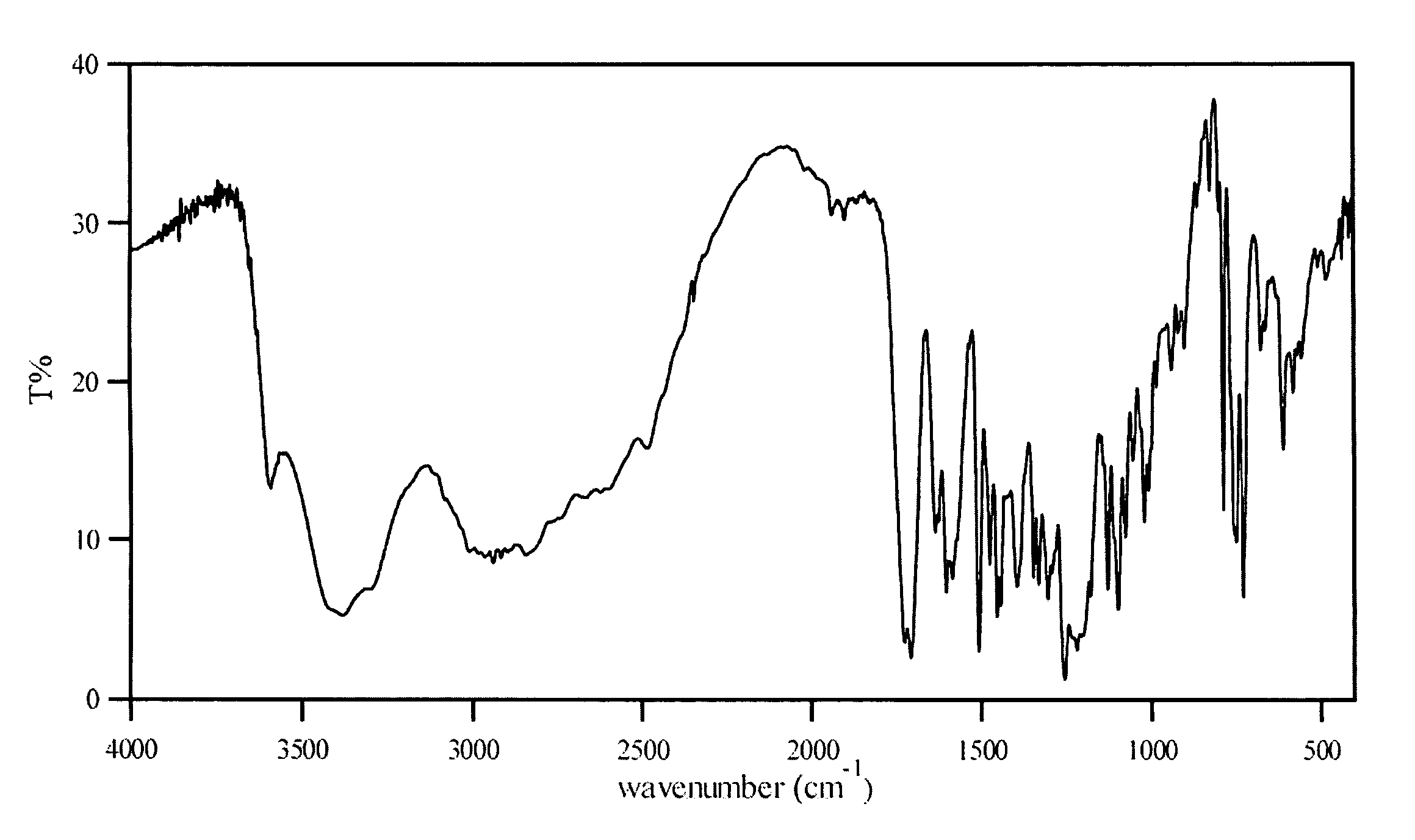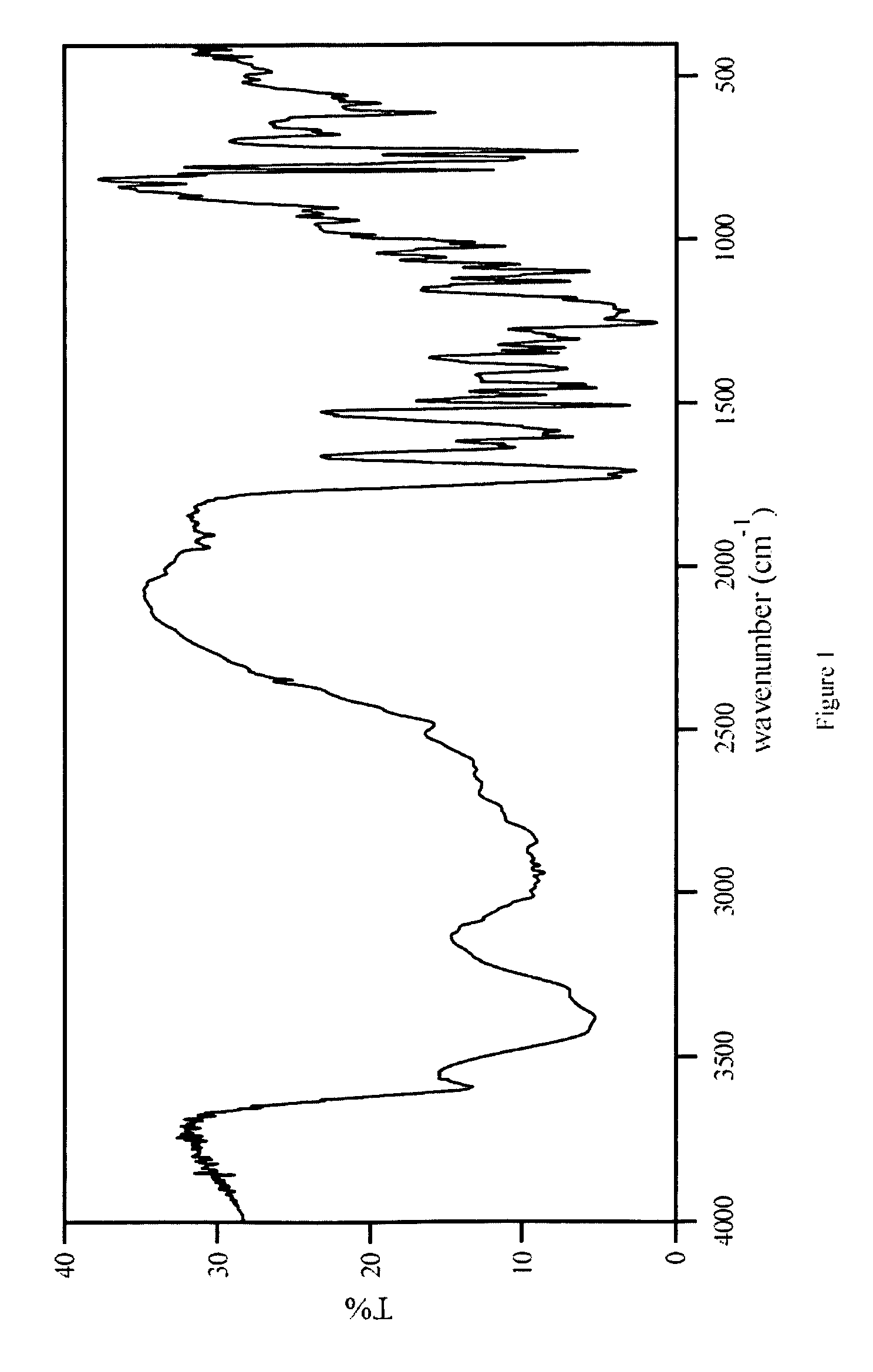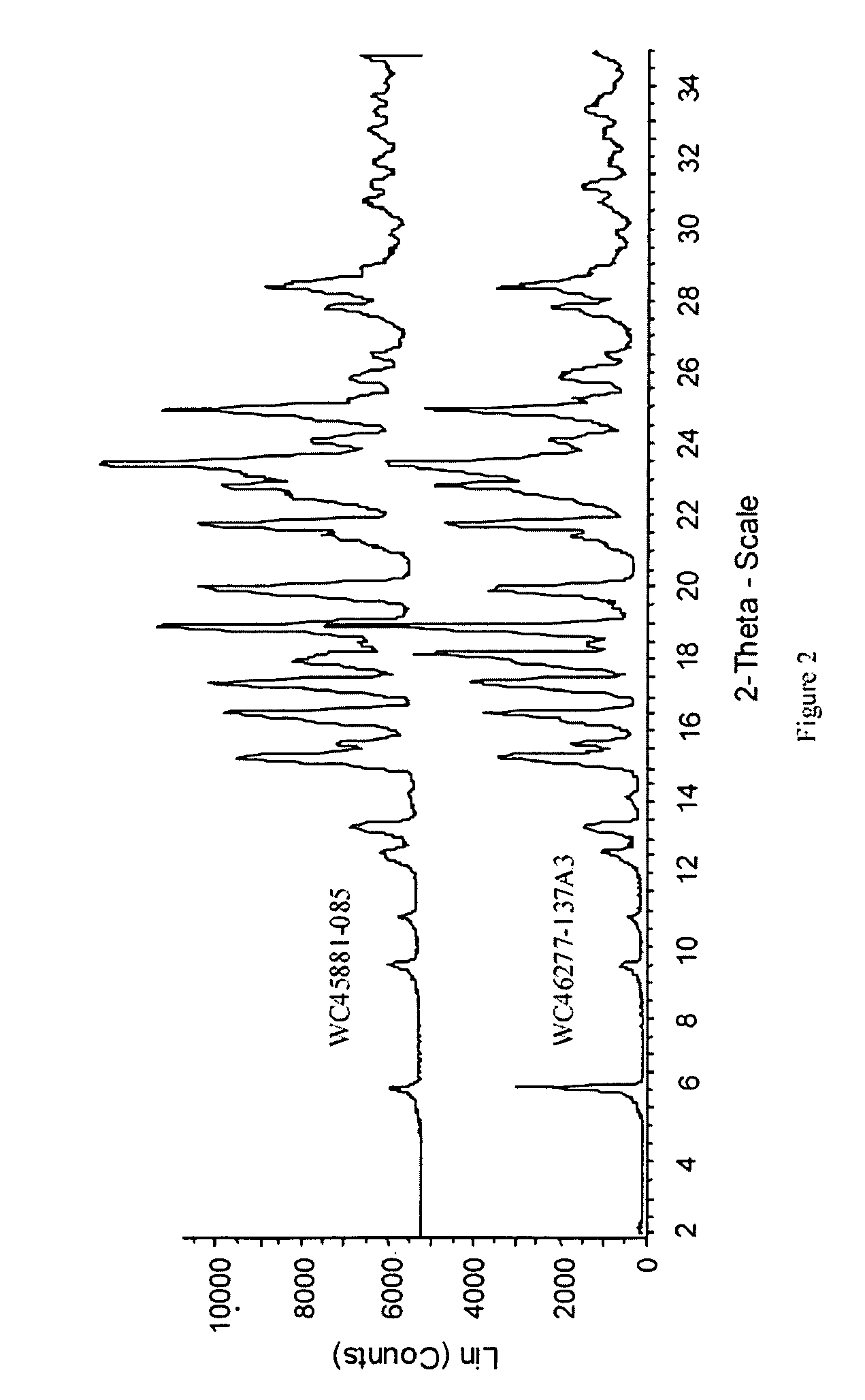Carvedilol Monocitrate Monohydrate
a technology of carvedilol and monocitrate, which is applied in the field of carvedilol salt, can solve problems such as marginal or inacceptable chemical stability
- Summary
- Abstract
- Description
- Claims
- Application Information
AI Technical Summary
Benefits of technology
Problems solved by technology
Method used
Image
Examples
example 1
[0022] In a 150 mL glass beaker, 100 gram of 20% w / w citric acid solution was prepared and 2.2 gram of carvedilol was added. The solution became slightly brownish after 15 minutes stirring, with only a little solid sticking on the bottom of the beaker. The beaker was then placed in a fume hood for evaporation. After staying in the hood overnight, large single crystals appeared in the beaker. The solid crystals were isolated and dried in a desiccator under vacuum. Similarly single crystals of citrate salt could be obtained by slow evaporation of carvedilol / citric acid solutions (containing citric acid 5%, 10% or 20% w / w) in Petri dishes (150 mm diameter) placed in a desiccator connected to a house vacuum.
example 2
[0023] A 250 mL three-necked flask equipped with stirrer bar, thermometer, and an addition funnel is charged with acetone (20 mL, 2.5 volumes). The solution is sequentially charged with carvedilol (8 g, 19.7 mmol), and 2 M citric acid solution (40 mL, 5 volumes). Upon addition of the citric acid solution, the slurry dissolves quickly. The solution is filtered through a Buchner funnel fitted with Whatman filter paper and the solution is returned to a 250 mL flask fitted with a stirrer. To the light brown solution is added water (20 mL, 2.5 volumes). No exotherm is noted. The reaction mixture becomes cloudy but disappears upon stirring (heating up to 40° C. maybe needed to remove cloudiness). The mixture is stirred at room temperature and when judged clear is charged with carvedilol monocitrate monohydrate seeds (80 mgs) in one portion. An immediate cloudiness is observed (solid starts to precipitate out over 12-24 hours). The precipitate formed is stirred for 24-48 hours and is filte...
example 3
[0024] A suitable reactor is charged with acetone. The solution is sequentially charged with carvedilol, and aqueous citric acid solution. Upon addition of the citric acid solution, the slurry dissolves quickly. To the solution is added water. The mixture is stirred at room temperature and is charged with carvedilol seeds in one portion. The precipitate formed is stirred for a period of time, filtered and the collected cake is washed with water. The cake is dried under vacuum to a constant weight and stored in a polyethylene container.
Characterization
[0025] The HPLC assay and 1H-NMR revealed that the molar ratio of carvedilol and citric acid in carvedilol citrate salt prepared was approximately 1:1. The characterization by several other techniques are listed below:
Scanning Electron Microscopy (SEM):
[0026] The SEM used for the study was a Hitachi S-3500N. SEM was performed using an acceleration voltage of 5 kV. The samples were gold sputtered.
[0027] The carvedilol monocitrate s...
PUM
| Property | Measurement | Unit |
|---|---|---|
| solubility | aaaaa | aaaaa |
| pH | aaaaa | aaaaa |
| saturation solubility | aaaaa | aaaaa |
Abstract
Description
Claims
Application Information
 Login to View More
Login to View More - R&D
- Intellectual Property
- Life Sciences
- Materials
- Tech Scout
- Unparalleled Data Quality
- Higher Quality Content
- 60% Fewer Hallucinations
Browse by: Latest US Patents, China's latest patents, Technical Efficacy Thesaurus, Application Domain, Technology Topic, Popular Technical Reports.
© 2025 PatSnap. All rights reserved.Legal|Privacy policy|Modern Slavery Act Transparency Statement|Sitemap|About US| Contact US: help@patsnap.com



